Happy New Year!
For many of us, this feels like a reset. The minute that transports us from 2022 to 2023 seems more important than any other. We mark time and its passage as if it was linear and definitive. But time, like reality, is much more elastic.
Those who follow the Chinese calendar will be celebrating the New Year on January 22nd. The date changes every year since that calendar is lunisolar, based on the moon and sun cycles. The new year starts on the second new Moon after the winter solstice. Each month begins with a new moon and the full moon marks the middle of the month. Years are alternatively 12 or 13 months long. Instead of numericals, each year corresponds to an element and animal. We’ll soon be entering the year of the Water Rabbit.
Though most of the world now follows the Gregorian calendar, we don’t give much thought to its significance. Sometimes I forget that 2023 isn’t a “real” reflection of time. It doesn’t measure how old the earth is, nor does it determine how long humans have been here. We say it’s 2023 because that’s how long ago Jesus Christ was born. It’s quite astonishing that we’ve all accepted that specific event as the global measure of time, regardless of religious belief.
But that wasn’t always the case. When the French revolution took place, one of the reforms was to create a secular calendar. Rebelling against the monarchy and its religious associations, the French abandoned the Gregorian calendar for an entirely new system – the French Republican calendar. Year 1 would no longer be associated with Jesus, it was changed to September 22, 1792, the date the French Republic was established. Every new year now coincided with the Fall Equinox.
The poet Philippe Fabre d’Églantine renamed each month, abandoning their ties to Saints and Christian festivals, to instead celebrate nature and agricultural harvests. Each month was named after a seed, tree, flower, fruit, or animal. The first month of the year, which was now September, was named “Vendémiaire”, the Occitan word for “grape harvest.”
The French revolutionaries also changed how time was measured. In order to eliminate the religious connotation of “God resting on the seventh day,” they made each week 10 days long. Every month had three weeks. And days were no longer 24-hours, but only lasted 10 hours. Each hour consisted of 100 minutes and each minute was 100 seconds.
While the new system was meant to be rational and non-religious, its application proved to be extremely challenging. The French Republican calendar lasted 12 years, until the Napoleonic regime reestablished the Gregorian calendar in 1806.
Despite its short-lived creation, the French Republican calendar was a truly revolutionary concept. Socialist Eviatar Zarubavel calls it: “the most radical attempt in modern history to challenge the western standard temporal framework.”
Time is malleable. We sculpt it to fit our needs, we organize it according to our values. This doesn’t just happen on a collective level, but is also reflected in our individual lives. What we do with it, whom we share it with, what we’re willing to exchange for it – time is a powerful choice. My wish for this year is that we cherish our time, however we define it.
May this month’s Seven Senses – see, hear, smell, taste, touch, balance and envision – expand your idea of time.
In Joy,
Sabrina
SEE
“The Clock” + “Doors” | art by Christian Marclay
“Doors” on view until February 27, 2023
One of the most impressive artworks I’ve ever experienced is “The Clock “by Christian Marclay. Constructed from thousands of movie and TV clips, “The Clock” is a 24-hour video artwork that depicts the passage of time.
The art piece is synchronized to the local time wherever it is shown. So when it’s 3:44 pm, the video plays a scene showing the corresponding time. With each passing minute, the film reflects real time. The curated clips offer a wide range of narratives that match the mood of that time of day – the eight in the morning scenes are very different from the midnight clips. When I saw the piece at LACMA in 2015, they kept the museum open 24 hours for a full experience of the artwork.
“The Clock” is not currently exhibited. But Christian Marclay just released a new video, which is showing for the first time at Centre Pompidou in Paris. Similarly to “The Clock,” his latest work “Doors” (2022) also uses edited film scenes to represent time. The video uses doors and rooms, hallways and corridors, forming a 54-minute visual loop.
I won’t be able to see this exhibit in person but if you’re in Paris, I’d love to hear your experience. It’s currently on view at Centre Pompidou in Paris.
HEAR
“ORGAN2/ASLSP” | John Cage
Listen on YouTube
“ORGAN2/ASLSP” is the slowest and longest music piece ever created. Avant-garde composer John Cage wrote the piece in 1985 for the piano but changed it for the organ in 1987. The score consists of eight pages of music and Cage didn’t suggest a tempo, only advising that the piece be played “as slow as possible.”
Music enthusiasts have taken the challenge to heart. Diane Luchese played “ORGAN2/ASLSP” for 14 hours in 2009 at Towson University, making it the longest recorded individual performance. The record was broken last year when Christopher Anderson gave a 16-hour performance at Perkins Chapel on March 8, 2022.
But the most impressive interpretation of “as slow as possible” is taking place in Halberstadt, Germany. A group of artists have created a special organ to perform the composition for a total of 639 years. The performance began in 2001 and is scheduled to end in 2640. Every few years, the notes of the St. Burchardi organ are changed to reflect the composition. Certain notes are played for up to seven years. The next note change is scheduled for February 5, 2024.
I want to thank Joseph Sannicandro, a contributor to
for introducing me to this piece. If you’re interested in experimental and instrumental music, you’ll enjoy their newsletter.SMELL
Scent Rhythm watch | invention by Aisen Caro Chacin
Explore online
What if you could tell time by smelling instead of seeing? That’s what the “Scent Rhythm” watch attempts to do. Aisen Caro Chacin has created a chemical-based watch that emits fragrances in tune with the circadian cycle of the human body.
The Scent Rhythm watch is made with glass bulbs filled with liquid scents, which are converted into puffs of misty fragrances. The watch releases a time-sensitive scent aimed to induce a mood or behavior suited to the moment. The caffeine molecules released in the morning hours are designed to activate our day. In the afternoon, the smell of money is meant to drive our productivity. A mixture of whiskey, tobacco and valerian root relaxes us into the evening. And chamomile enhanced with melatonin is designed to help us sleep at night.
The watch was created as a prototype, which you can learn more about on the inventor’s site.
TASTE
Aged coffee | drink
Some foods taste better with time. Classic examples of aged foods include wine, cheese and balsamic vinegar. But I’ve also learned about another unexpected one – coffee.
The way our food palette evolves is often by accident. For decades, the only coffee Europeans had access to was freshly imported from Africa. When Colombian beans first made their way to Europe, the long journey changed the appearance and flavor of the beans, giving them a special aroma. The Europeans loved it and Colombian beans became highly praised. With the construction of the Suez Canal in 1869, the trip was shortened and the beans lost their unique aged flavor. In an attempt to recreate the taste, people began to purposely age coffee beans. The beans would rest in ports for months, exposed to sea air. Eventually, fresh coffee regained popularity and the process of aging beans was abandoned.
But trends come in cycles. And “aged” coffee is now making a come-back. Coffee makers are experimenting with wine and whiskey barrels to age coffee beans. Only certain types of coffee age well. Typically, beans need to be high in body and low in acidity. Some good agers include low-acid coffees from India and Indonesia, semi-dry processed beans from Sumatra and Sulawesi, and also more acidic wet-processed beans from Latin American, which tend to mellow as they age. The aging process is delicate and if the beans aren’t handled under proper circumstances, they’ll lose their oils, making the coffee stale.
If you’ve ever tasted aged coffee and have a recommendation, I’m curious to try it.
TOUCH
Sand Mandala | visual meditation
A few years ago, I was able to witness the incredible process of sand mandalas, performed by Tibetan Buddhist monks – Venerable Gelong Kalsang Rinpoche, Venerable Lama Nawang Thogmed, Lama Nawang Samten Lhundrup, and Lama Dorji Sherpa.
Mandala literally translates to “center and its surroundings.” They’re used as meditation and visualization tools, with their geometric shapes representing our interconnectedness. Mandalas are present in many cultures, and various materials are used to create them. When I traveled in Southern India, I often observed women drawing mandalas in front of their homes using colored chalk. Their beautiful designs never lasted, often washed away by the rain within the day.
Tibetan monks are known for their intricate sand mandalas, made from millions of colored sand grains. Their method follows ancient instructions passed down over thousands of years. Once the mandala is completed, which can take weeks or months, the artwork is then swept away as a reminder of impermanence. The devoted process of creation, followed by its purposeful destruction are meant as a practice of detachment, a central teaching in Buddhism.
I invite you to create your own ephemeral mandala, using any materials you please. Forget about the self-imposed concept of time. Slow down, expand. Create with care, patience and devotion. Imbue your mandala with as much beauty as you can. And once you’re finished, lovingly destroy it. Release and let go.
BALANCE
Spiral Poem | visual meditation by Kenshō studio
Available online
The phrase “we’re not going in circles, we’re expanding” came to me as a message of hope. While there’s plenty of evidence that confirms the saying “history repeats itself,” there are also many signs of positive change. Yes, it does take us a while to learn, both collectively and individually. We often make the same mistakes over and over again, before the lesson sinks in. But eventually, it does. We grow, we heal, we transform.
With each year I see this change within myself. With each generation, I witness an evolution in our consciousness. It gives me hope. What I focus my attention on is what grows. So this is where I chose to turn my awareness – a message of hope I’m carrying this year.
If you’d like to carry and spread it too, I’ve made a tote bag with the hand-written message “we’re not going in circles, we’re expanding”. Each tote comes with a unique mini-poem. Available on kenshostudio.co
ENVISION
Timelapse | ephemeral art by Nature
Prompted by the Tibetan sand mandalas, and inspired by one of my favorite artists, Andy Goldsworthy, I wanted to create an ephemeral artwork in nature.
On January 1st, I went to the beach with a plan. I wanted to gather shells and stones to create a symbol of time. But my search was in vain, no stones in sight and only a few tiny shells were to be found. Nothing in the sand, it was all in the sky. It had rained heavily for a few days, a rare occasion in LA, and pink clouds formed above my head. I stopped and watched the seagulls dancing in the cotton candy sky.
This was not a day to create, but simply observe. Nature had its own ephemeral art show. So I sat front row, feet in the sand, admiring the first sunset of the year.





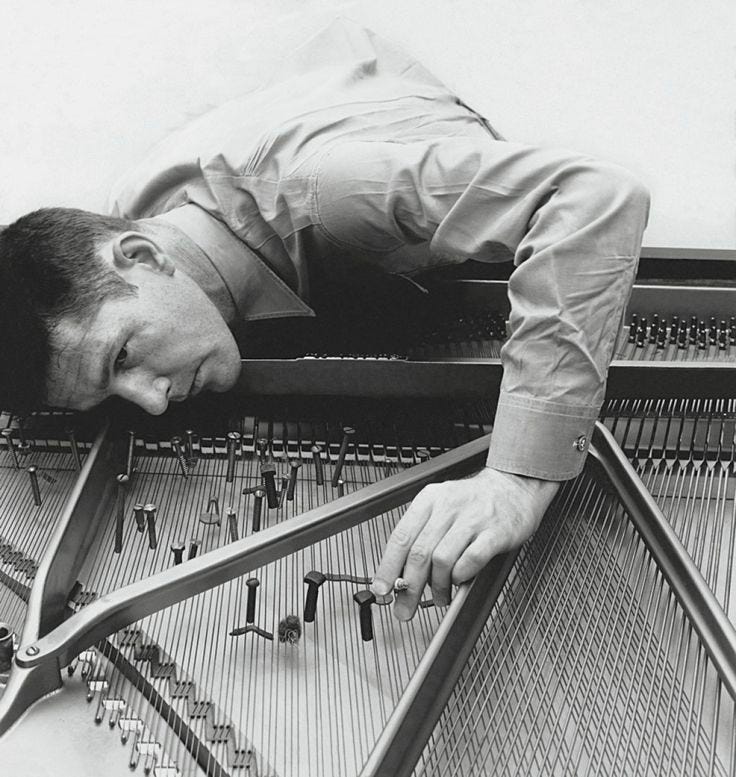
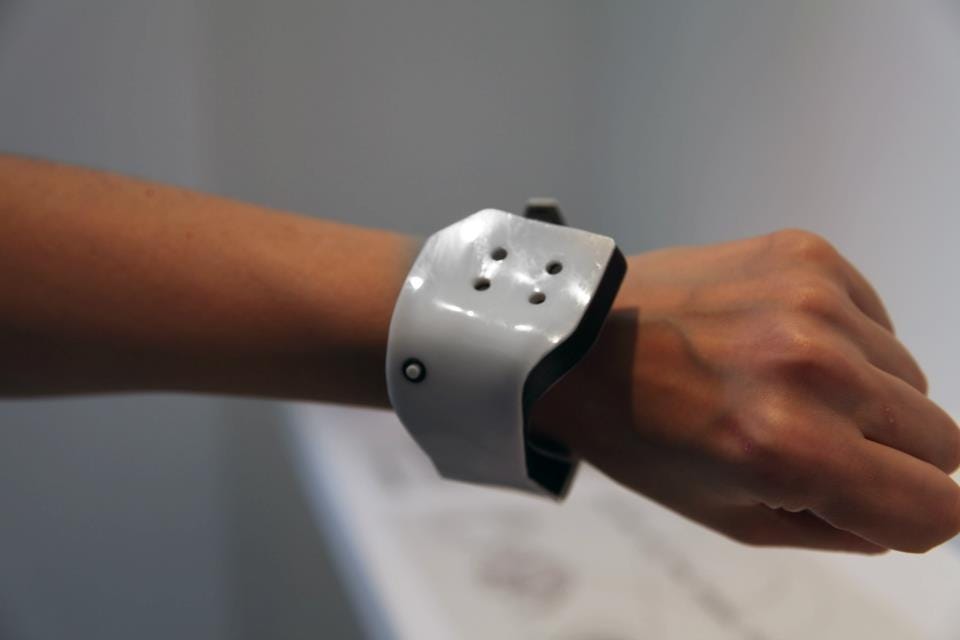
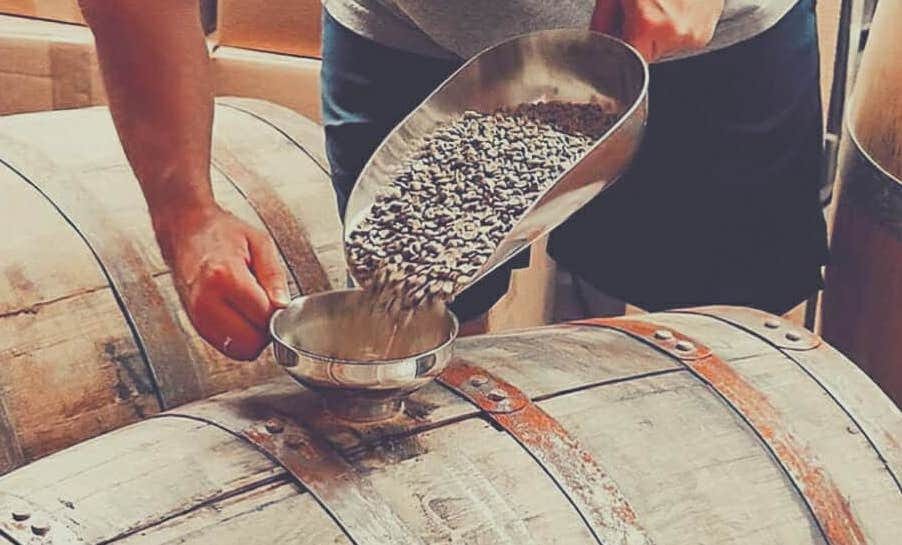
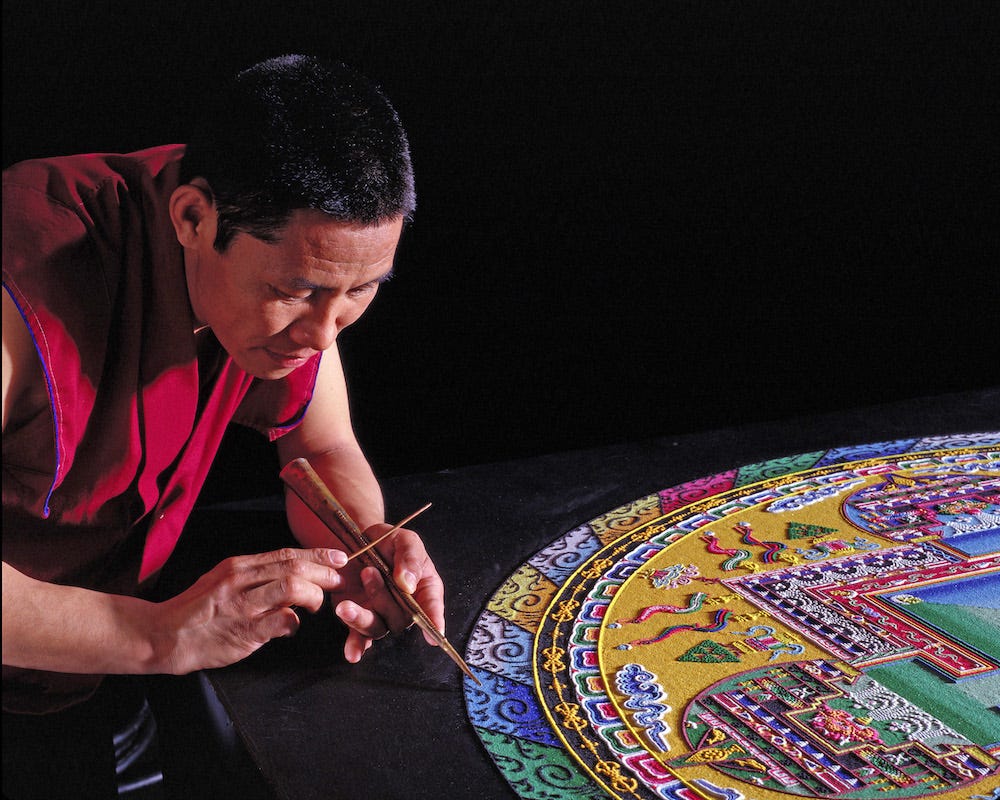

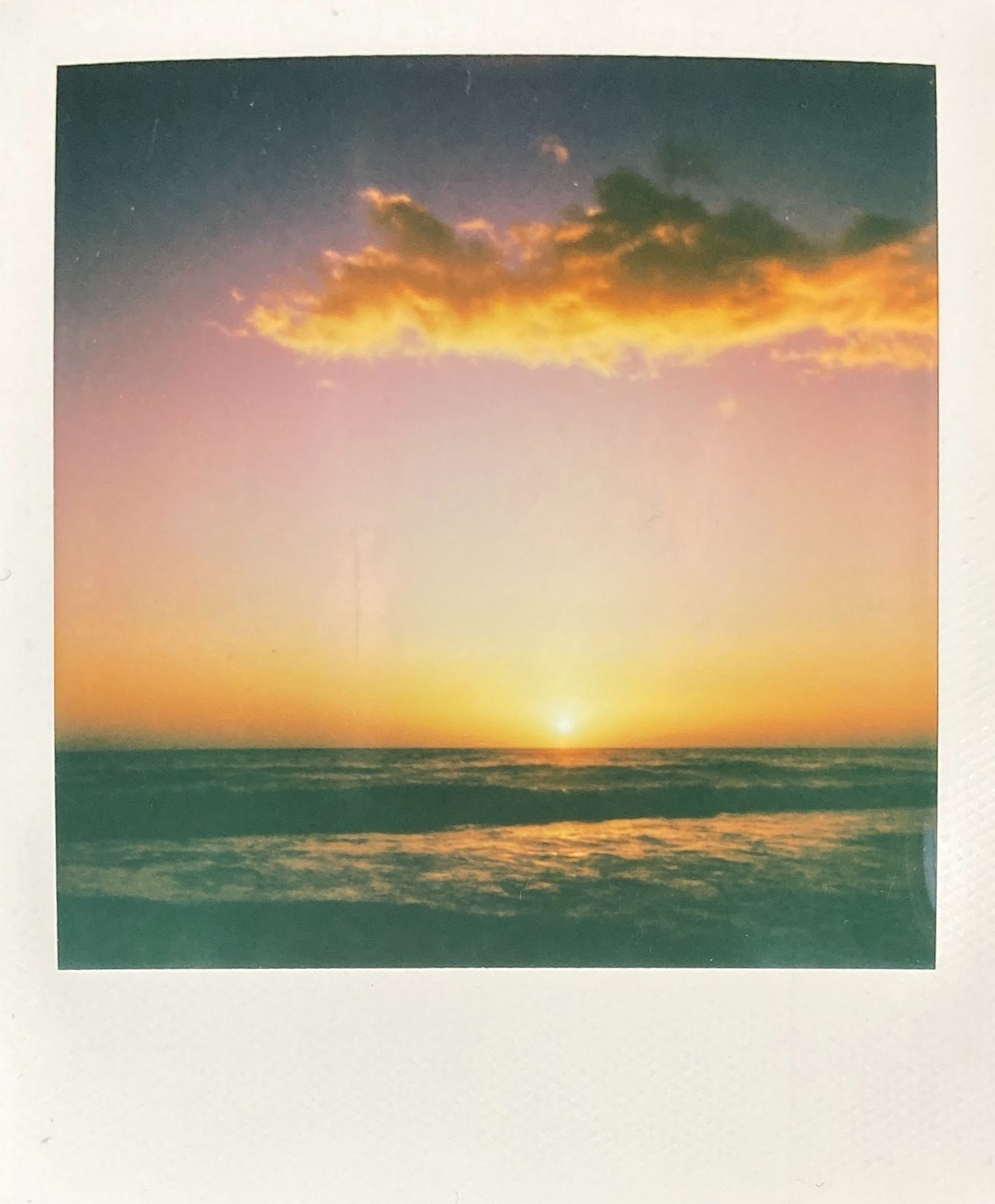

Share this post